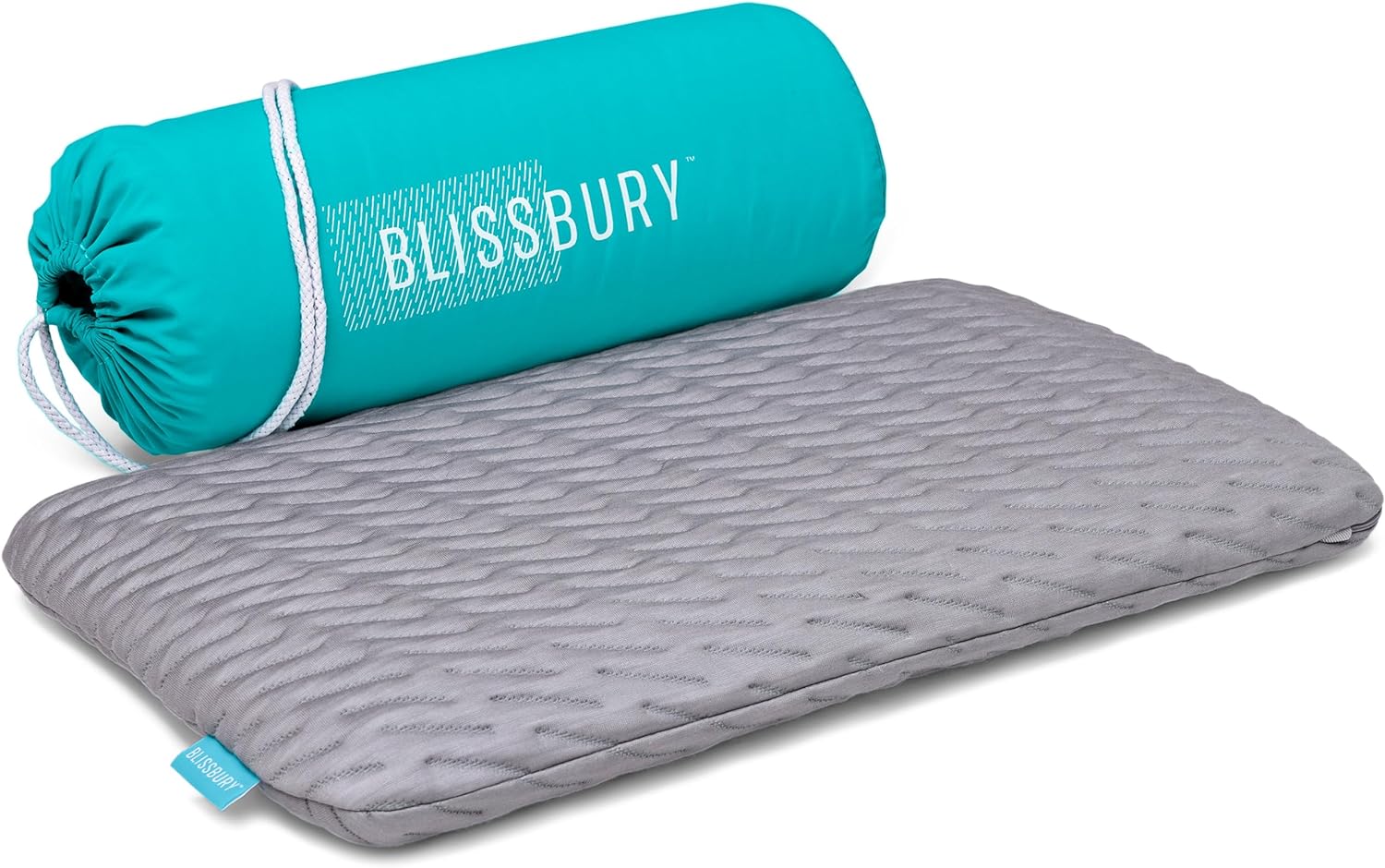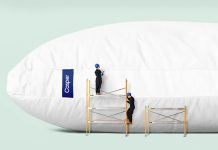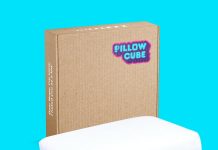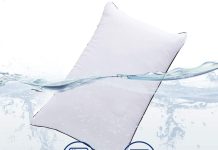Are you tired of waking up in the middle of the night with a sweaty pillow? If so, you’re not alone. Many people struggle with excessive sweating while they sleep, which can lead to discomfort and a restless night’s sleep. But fear not, because there’s a solution: breathable pillow materials. These innovative materials are designed to promote airflow, allowing heat and moisture to escape, ultimately keeping you cool and dry throughout the night. In this article, we will explore some of the best breathable pillow materials that can help reduce sweating and improve your sleep quality. Say goodbye to sweaty nights and hello to a more comfortable sleep experience.
Review contents
Overview of Night Sweating
Night sweating is a common condition that many individuals experience. It refers to excessive sweating during sleep that is not caused by external factors such as a warm room temperature or heavy blankets. Night sweating can be uncomfortable and disruptive to your sleep, often leading to damp sheets, discomfort, and difficulty falling back asleep. Understanding the causes and effects of night sweating is important in finding effective solutions, such as choosing the right breathable pillow materials.
Causes of Night Sweating
Night sweating can be caused by a variety of factors. Hormonal changes, such as those occurring during menopause, can lead to increased body temperature and night sweats. Certain medications, such as antidepressants and hormone therapy, can also contribute to night sweating. Medical conditions like sleep apnea, hyperthyroidism, and infections can cause excessive sweating during sleep. Stress, anxiety, and nightmares can also trigger night sweating. By identifying and addressing the underlying cause of night sweating, you can better manage this condition.
Effects of Night Sweating
Night sweating can have various effects on your well-being. Firstly, it can disturb your sleep, leading to fatigue and reduced daytime productivity. Waking up frequently due to damp sheets and discomfort can prevent you from achieving a restful night’s sleep. Night sweating can also create an uncomfortable sleeping environment, making it difficult for you to relax and fall asleep. Additionally, it can negatively impact your mattress and pillows, causing them to become damp and potentially leading to mold or mildew growth. Therefore, finding breathable pillow materials can help reduce the negative effects of night sweating.
Importance of Breathable Pillow Materials
Breathable pillow materials play a crucial role in managing night sweating. When you sleep, your body temperature naturally rises and sweat is produced to cool you down. However, if the sweat is unable to evaporate, it can lead to discomfort and disrupted sleep. This is where breathable pillow materials come into play. By allowing air circulation and moisture-wicking properties, these materials can help dissipate sweat and prevent it from accumulating on the surface of your pillow. This creates a more comfortable sleeping environment, allowing you to sleep more soundly and wake up refreshed.
Natural Pillow Materials
Natural pillow materials offer a range of benefits, including breathability and comfort. Here are some popular options:
Cotton
Cotton is a classic choice for pillows due to its excellent breathability. It allows air to circulate freely, preventing the accumulation of heat and moisture. Cotton pillows are soft, hypoallergenic, and easy to maintain. They are also an affordable option, making them accessible to a wide range of individuals.
Bamboo
Bamboo pillows are becoming increasingly popular due to their natural cooling properties. The bamboo fibers used in these pillows naturally wick away moisture and promote airflow, making them ideal for individuals who experience night sweating. Bamboo pillows are also known for their antimicrobial properties, which can help prevent the growth of bacteria and allergens.
Silk
Silk pillows not only offer a luxurious feel, but they are also highly breathable. Silk allows air to circulate, providing a cooling effect during sleep. Additionally, silk has natural moisture-wicking properties, making it an excellent choice for individuals with night sweating. Silk pillows are also hypoallergenic and help reduce friction on the skin, preventing the development of wrinkles and bedhead.
Synthetic Pillow Materials
Synthetic pillow materials can also provide breathability and comfort. Here are a few options:
Memory Foam
Memory foam pillows are known for their contouring ability and pressure relief. While traditional memory foam tends to retain heat, there are now memory foam pillows infused with cooling gel or designed with airflow channels to enhance breathability. These modifications can help reduce night sweating and improve overall sleep comfort.
Polyester
Polyester pillows are a popular choice due to their affordability and availability. While polyester may not be as breathable as natural materials, it can still provide adequate airflow and moisture-wicking properties. Polyester pillows are lightweight and easy to care for, making them a convenient option for those seeking a breathable pillow.
Microfiber
Microfiber pillows offer a soft and plush feel, similar to natural down. These pillows are made from fine synthetic fibers that mimic the breathability and loft of down. Microfiber pillows are hypoallergenic and provide good airflow, promoting a cool and comfortable sleeping experience.
Hypoallergenic Pillow Materials
For individuals with allergies or sensitivities, hypoallergenic pillow materials are essential. Here are a few hypoallergenic options that also offer breathability:
Latex
Latex pillows are naturally resistant to allergens such as dust mites, molds, and mildew. They offer excellent breathability, allowing air to circulate and preventing the accumulation of heat and moisture. Latex pillows provide optimal support and can help alleviate pressure points, promoting a comfortable sleep environment.
Buckwheat
Buckwheat pillows consist of natural hulls that create a supportive and breathable surface. These pillows are hypoallergenic and resistant to dust mites. The airflow between the buckwheat hulls allows for excellent breathability and can help regulate temperature during sleep. Buckwheat pillows are particularly suitable for individuals who prefer firm support and a natural filling option.
Kapok
Kapok pillows are made from fibers derived from the kapok tree. These pillows offer a luxurious feel while providing excellent breathability. The fibers have natural moisture-wicking properties, keeping you cool and dry throughout the night. Kapok pillows are hypoallergenic and resistant to mold and dust mites, making them a suitable option for allergy sufferers.
Moisture-Wicking Pillow Materials
Moisture-wicking pillow materials are specifically designed to draw moisture away from your body and keep you cool. Here are a few options:
Cooling Gel
Cooling gel pillows are infused with gel materials that help absorb and dissipate heat. The gel creates a cooling effect, reducing night sweating and promoting a comfortable sleep environment. These pillows often have a contoured design to provide additional support and pressure relief.
Tencel
Tencel is a fabric made from sustainably sourced wood fibers. Tencel pillows offer excellent moisture-wicking properties, drawing sweat away from the body and evaporating it quickly. The fabric is breathable and soft, providing a comfortable sleeping surface. Additionally, Tencel is eco-friendly and biodegradable.
Outlast
Outlast is a phase-change material that helps regulate body temperature. Outlast pillows are designed to absorb excess body heat and release it when needed, maintaining a more consistent temperature throughout the night. These pillows actively help reduce night sweating and provide a cool and comfortable sleeping experience.
Breathable Pillow Designs
In addition to choosing the right pillow materials, the design of the pillow itself can also contribute to breathability. Here are a few examples:
Pillow with Ventilation Holes
Pillows with ventilation holes are designed to enhance airflow and prevent the accumulation of heat and moisture. These holes allow air to circulate freely, promoting breathability and reducing the likelihood of night sweating. Pillows with ventilation holes are available in various materials, catering to individual preferences and needs.
Pillow with Mesh Panels
Pillows with mesh panels are another excellent design option for breathability. These pillows have sections made of breathable mesh material, which allows for optimal air circulation. The mesh panels provide a cooling effect and help dissipate moisture, providing a dry and comfortable sleeping environment.
Adjustable Loft Pillow
An adjustable loft pillow allows you to customize the height and support of your pillow according to your preferences. This type of pillow often has removable inserts or layers that can be added or removed to achieve the desired loft. By adjusting the loft, you can optimize breathability and ensure proper alignment of your head and neck.
Comparison of Breathable Pillow Materials
To help you choose the right breathable pillow material, it is helpful to consider various factors:
Breathability
Cotton, bamboo, silk, and latex are among the most breathable pillow materials, allowing for optimal air circulation and moisture evaporation. Memory foam infused with cooling gel or designed with airflow channels can also enhance breathability. Polyester and microfiber pillows offer moderate breathability, while buckwheat and kapok pillows provide natural airflow.
Absorbency
Tencel, outlast, and cooling gel pillows are known for their excellent moisture-wicking properties. These materials effectively draw moisture away from your body and promote quick evaporation. Natural materials like cotton, bamboo, and silk also have good absorbency, helping to keep you dry and comfortable throughout the night.
Odor Control
Natural materials such as bamboo, silk, and latex offer inherent antimicrobial properties that can help prevent the growth of odor-causing bacteria. Memory foam pillows with infused cooling gel or treated with antimicrobial agents can also assist in odor control. Polyester and microfiber pillows may require regular washing to maintain freshness.
Durability
Latex, buckwheat, and kapok pillows are known for their durability and can maintain their shape and support for an extended period. Cotton, bamboo, and silk pillows are also durable options when properly cared for. Memory foam, polyester, and microfiber pillows may require replacement sooner due to wear and tear.
Price Range
The price range of breathable pillows can vary depending on the material and quality. Cotton, polyester, and microfiber pillows tend to have a lower price point, making them more budget-friendly options. Natural materials like bamboo, silk, and latex pillows are often moderately priced. Buckwheat and kapok pillows may have a higher price point due to their unique filling.
Choosing the Right Pillow Material for You
When choosing the right pillow material, it is important to consider your personal preferences and sleep needs. Factors such as desired firmness, support, and any existing allergies or sensitivities should be taken into account. Additionally, consulting with a healthcare professional or sleep specialist can provide valuable insights and recommendations based on your individual circumstances.
Considerations for Personal Preferences
Think about your preferred sleeping position and the level of support you require. Side sleepers may benefit from pillows with firmer materials, such as memory foam or latex, to ensure proper alignment of the spine. Stomach sleepers may prefer softer pillows for comfort. Back sleepers may find a medium to a medium-firm pillow that provides both support and cushioning.
Consulting with a Healthcare Professional
If night sweating persists or is accompanied by other concerning symptoms, it is advisable to consult with a healthcare professional. They can help identify any underlying medical conditions or factors contributing to night sweating. Additionally, they may provide specific recommendations for breathable pillow materials based on your individual health needs.
Tips for Better Sleep and Reducing Night Sweating
While choosing the right breathable pillow material is important, there are additional steps you can take to improve your sleep quality and reduce night sweating.
Maintain a Comfortable Room Temperature
Ensure your bedroom is kept at a cool and comfortable temperature. Optimal sleeping conditions typically range between 60 to 67 degrees Fahrenheit (15.5 to 19.5 degrees Celsius). Experiment with different room temperatures to find what works best for you and promotes a sweat-free night’s sleep.
Use Proper Bedding
Choose moisture-wicking sheets and breathable mattress protectors to complement your breathable pillow. This will help create an overall sleep environment that promotes cooling and evaporation of sweat. Avoid heavy blankets or comforters that may trap heat and prevent airflow.
Practice Good Sleep Hygiene
Establish a consistent sleep routine, aiming for 7-9 hours of quality sleep each night. Create a relaxing bedtime routine that includes activities such as reading or taking a warm bath to signal to your body that it is time to wind down. Limit your intake of caffeine and alcohol before bed, as these substances can contribute to night sweating and disrupted sleep.
Conclusion
Night sweating can be a frustrating and uncomfortable experience, but choosing the right breathable pillow material can greatly alleviate this issue. With a wide range of options available, including natural, synthetic, hypoallergenic, and moisture-wicking materials, you can find a pillow that suits your preferences and sleep needs. By considering factors such as breathability, absorbency, odor control, durability, and price range, you can make an informed decision. Remember to also prioritize personal comfort and consult with a healthcare professional for personalized advice. With the right pillow material and proper sleep practices, you can achieve more restful nights and wake up feeling refreshed.



























